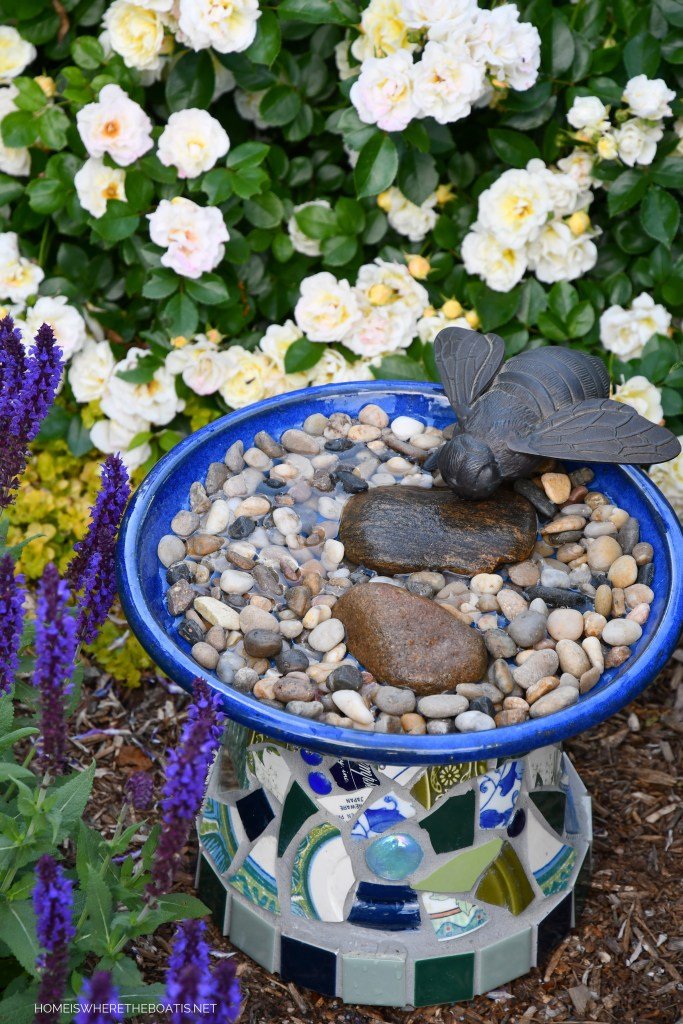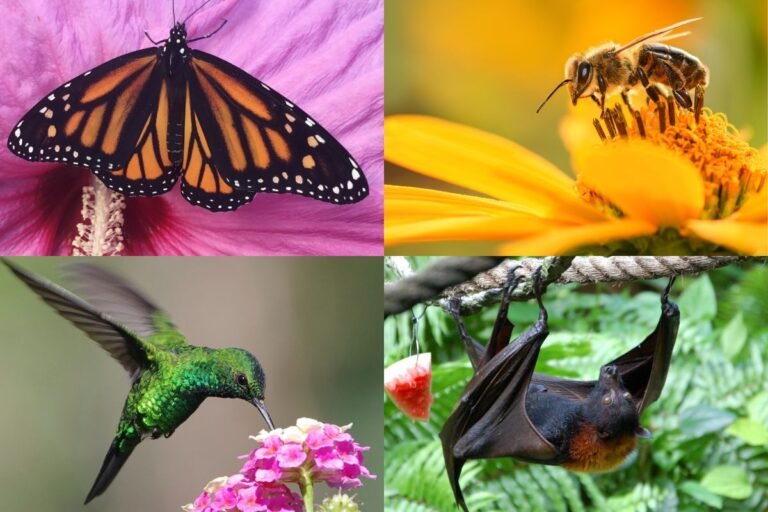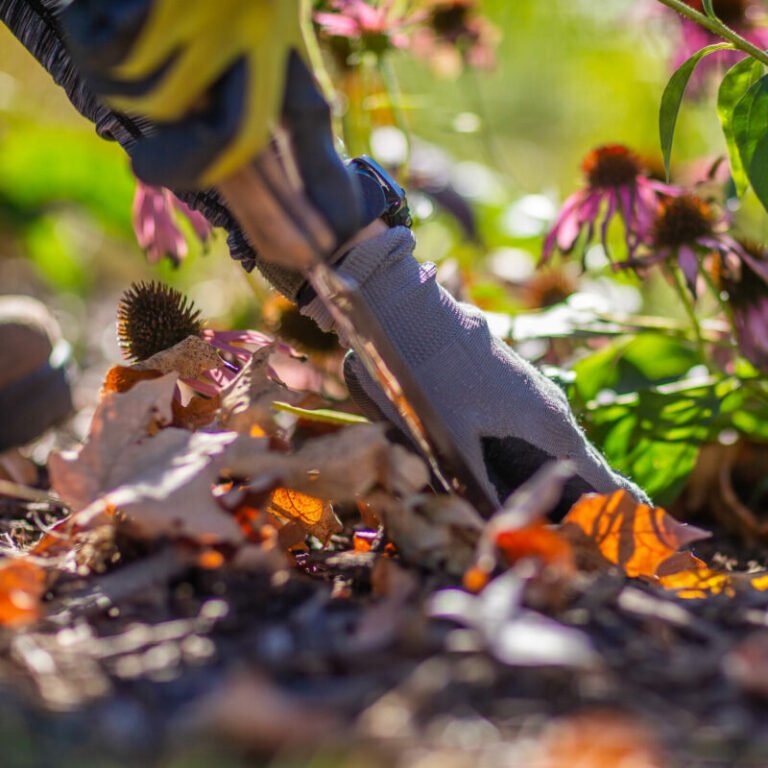Gardens are a haven for pollinators like bees, butterflies, and birds. They need water just as much as they need nectar and pollen.
Providing water sources for pollinators can boost their health and help your garden thrive. Many DIY water source ideas are easy and inexpensive. Whether you have a small balcony garden or a vast backyard, you can create a welcoming environment for these vital creatures.
In this post, we will explore ten simple and creative DIY water source ideas. These ideas will not only attract pollinators but also enhance the beauty of your garden. Get ready to make your garden a pollinator paradise!
Birdbaths
Birdbaths are a great way to provide water for pollinators. They are easy to set up and maintain. Pollinators like bees and butterflies need water to survive. Birdbaths can help attract these helpful creatures to your garden.
Choosing The Right Birdbath
Choose a birdbath that is shallow. Pollinators need shallow water to drink safely. A depth of one to two inches is ideal. Look for a birdbath with a rough surface. This gives pollinators a better grip. Smooth surfaces can be slippery and dangerous.
Birdbaths made of natural materials are best. Stone, ceramic, or terracotta work well. They blend in with the garden and provide a natural look. Plastic birdbaths can heat up quickly in the sun. This can make the water too warm for pollinators.
Maintaining Clean Water
Clean water is important for pollinators. Dirty water can spread disease. Change the water every few days. Rinse the birdbath with clean water to remove debris. Scrub it with a brush if needed.
Avoid using chemicals to clean the birdbath. They can harm pollinators. Use a mix of vinegar and water instead. This is safe and effective. Make sure to rinse well after cleaning.
Place the birdbath in a shady spot. This helps keep the water cool. It also slows down algae growth. If algae build up, clean it right away. Algae can make the water unsafe for pollinators.
Shallow Dishes
Shallow dishes are a simple and effective way to create water sources for pollinators in your garden. These dishes can easily be repurposed from household items. They provide a safe and accessible water source for bees, butterflies, and other beneficial insects. Below are some tips on selecting and positioning shallow dishes to attract pollinators.
Selecting Appropriate Dishes
Choose dishes that are shallow. A depth of no more than 1 inch is ideal. This prevents pollinators from drowning.
Use materials that are durable. Ceramic, glass, or sturdy plastic dishes work well. Avoid metals that can rust or heat up quickly.
Ensure the dish has a wide surface area. Pollinators need enough space to land and drink without crowding.
Positioning For Pollinator Access
Place the dishes near flowering plants. Pollinators are more likely to find them there.
Position the dishes in a sunny spot. Sunlight helps keep the water warm and attractive to insects.
Elevate the dishes slightly. Use a small stand or bricks to lift them off the ground. This helps keep ants and other ground pests away.
Keep the water fresh. Refill and clean the dishes daily to prevent algae growth and mosquito breeding.
By using shallow dishes, you can create a welcoming environment for pollinators in your garden. It’s a simple and rewarding way to support these essential creatures.
Watering Cans
Watering cans can be more than just tools for your garden. They can also serve as creative and effective water sources for pollinators. By making simple adjustments, you can turn old or new watering cans into reliable water stations for bees, butterflies, and other pollinators.
Upcycling Old Cans
Don’t throw away those old watering cans. Upcycling them can give them a new purpose. Start by cleaning the cans thoroughly. Remove any rust or dirt to ensure they are safe for pollinators. Next, fill the cans with fresh water. Add some pebbles or small stones to the bottom. This helps the pollinators land safely and drink without drowning.
Here is a step-by-step guide:
- Clean the old watering can.
- Fill it with fresh water.
- Add pebbles or small stones to the bottom.
- Place the can in a shaded area in your garden.
With these steps, you have a simple and effective water source. The pollinators will thank you.
Creating A Drip System
Another great use for watering cans is creating a drip system. This system provides a slow, steady supply of water. This is perfect for pollinators who need a constant source of hydration.
Here’s how to make a drip system:
- Take a watering can with a narrow spout.
- Fill the can with water.
- Hang the can from a tree branch or sturdy pole.
- Ensure the spout is slightly tilted downwards.
- Adjust the tilt for a slow drip.
This method helps keep the water fresh and prevents stagnation. Pollinators get a continuous source of clean water.
With simple materials and a few minutes of work, you can create these helpful water sources. Your garden will attract more pollinators. And they will thrive, thanks to your thoughtful additions.
Puddling Stations
Creating puddling stations in your garden is a fantastic way to attract and support pollinators, especially butterflies. Puddling stations provide a safe and accessible water source that is rich in essential minerals. These stations mimic natural puddles where butterflies gather to sip water and absorb nutrients.
Materials Needed
- Shallow dishes or trays
- Sand or mud
- Rocks or pebbles
- Water
- Salt (optional)
Gathering the right materials is crucial. Use shallow dishes or trays to prevent drowning. Fill them with sand or mud to create a natural base. Add rocks or pebbles for landing spots. Fill the dish with water, ensuring it stays shallow. Adding a pinch of salt can provide extra minerals for the butterflies.
Attracting Butterflies
Butterflies are drawn to puddling stations for the minerals they need. Position your stations in sunny spots, as butterflies love warmth. Place them near nectar-rich flowers to create a complete habitat. Regularly refresh the water and keep the sand or mud moist.
Observing butterflies at your puddling stations is rewarding. These delicate creatures add beauty and life to your garden. Plus, they play a crucial role in pollination, helping your garden thrive.
Mini Ponds
Creating mini ponds in your garden is a great way to attract pollinators. These tiny water sources can provide essential hydration for bees, butterflies, and other beneficial insects. Mini ponds also enhance the aesthetic appeal of your garden, adding a touch of tranquility. Let’s dive into how you can build and maintain a small pond with aquatic plants.
Building A Small Pond
Start by choosing a suitable spot in your garden. Look for an area that gets partial sunlight. This helps maintain a balanced water temperature. Dig a shallow hole, about 6 to 12 inches deep. Line the hole with a pond liner or an old plastic tub. Ensure there are no sharp objects underneath that might puncture the liner.
Fill the pond with clean water. Adding rainwater is best as it contains fewer chemicals. Create a gentle slope on one side. This allows pollinators easy access to the water. Place some flat stones around the edge. They provide landing spots for insects. You can also add a small water pump for circulation. This keeps the water fresh.
Adding Aquatic Plants
Now, it’s time to add plants to your mini pond. Choose native aquatic plants. They are easier to maintain and attract local pollinators. Water lilies and lotus plants are great options. They provide shade and reduce algae growth. Place these plants in small pots before submerging them in the pond.
Floating plants like duckweed and water lettuce are also useful. They offer resting places for insects. Add some oxygenating plants like hornwort or anacharis. These plants help keep the water clean. Don’t overcrowd the pond with plants. Ensure there’s enough open water for pollinators to drink from.
Fountains
Create a garden oasis for pollinators with DIY water sources. Fountains provide essential hydration while adding beauty to your space. Simple and effective ideas make your garden a haven for bees and butterflies.
Fountains can transform your garden into a peaceful haven. Their gentle water flow attracts pollinators, providing them with a vital water source. Installing a fountain can be simple and rewarding. Read on to explore some exciting options.Solar-powered Options
Solar-powered fountains are eco-friendly and cost-effective. They harness the sun’s energy, so there’s no need for electrical wiring. These fountains come in various designs, from modern to traditional. Place them in sunny spots to ensure maximum efficiency. Solar fountains are perfect for gardens with limited access to power sources. They also reduce your carbon footprint.Ensuring Safe Water Flow
Safety is crucial for pollinators. Ensure the water flow is gentle. Strong currents can harm small insects. Opt for fountains with adjustable flow settings. Shallow basins are ideal, allowing easy access for bees and butterflies. Regularly clean the fountain to prevent algae buildup. Algae can be harmful to pollinators. Keep the water fresh by changing it frequently. This also prevents mosquito breeding. By considering these factors, you create a safe haven for pollinators. Your garden will thrive with their presence. “`Water Drippers
Water drippers are an excellent way to provide a steady water source for pollinators in your garden. They mimic natural conditions, attracting bees, butterflies, and other beneficial insects. By setting up water drippers, you can ensure these vital creatures have access to the hydration they need to thrive. Let’s dive into how you can set up and adjust water drippers to make your garden a haven for pollinators.
Setting Up Drippers
First, choose a spot in your garden that gets partial shade. This helps prevent the water from evaporating too quickly. Select a container that can hold a good amount of water. A large pot or bucket works well. Attach a dripper system to the container. You can buy a ready-made kit or make one yourself using tubing and a small valve. Place the dripper near flowering plants to attract pollinators.
Ensure the dripper is stable and won’t tip over easily. Secure it with stones or stakes if needed. Fill the container with clean water, free of chemicals. Pollinators need fresh, safe water to drink. Check the setup to ensure it works properly. Adjust the position if the water drips too far from the plants.
Adjusting Water Flow
Adjusting the water flow is crucial. Too much water can create puddles, while too little won’t attract pollinators. Start with a slow drip. Observe how the water spreads and how pollinators react. Increase the flow slightly if needed. Ensure the water reaches the plants without creating excessive runoff.
Regularly check the water level in the container. Refill it as needed to maintain a steady supply. Clean the dripper system periodically to prevent clogs and algae buildup. This ensures a consistent and clean water source for your garden’s pollinators.
Humidifiers
Creating a haven for pollinators in your garden involves more than planting flowers. Humidifiers can play a crucial role in providing a water source for these essential creatures. They help maintain the right moisture levels, ensuring pollinators stay hydrated and thrive.
Choosing Garden Humidifiers
Selecting the right humidifier is crucial. Consider the size of your garden. A small garden might only need a compact humidifier. Larger gardens may require more powerful models. Look for humidifiers with adjustable settings. This helps you control the moisture output effectively.
Energy efficiency is another factor. Choose models that consume less power. This ensures they can run continuously without increasing your energy bills significantly. Durable materials are also important. Outdoor humidifiers should withstand weather changes.
Proper Placement
Where you place your humidifier matters. Position it near flowering plants. This ensures pollinators can easily access the moisture.
Avoid placing it in direct sunlight. Excessive heat can cause rapid evaporation. Instead, find a shaded or semi-shaded spot. This keeps the water source cool and lasts longer.
Maintain a safe distance from bird feeders. Birds might disturb the humidifier. Keep it at a height where it’s accessible to pollinators but out of reach from larger animals.
Regular maintenance is key. Clean the humidifier to avoid mold build-up. Check water levels often. Refill as needed to ensure a constant supply of moisture.
Here’s a quick checklist for placement:
- Near flowering plants
- Shaded or semi-shaded spot
- Away from bird feeders
- Accessible height for pollinators
Follow these tips to ensure your garden humidifier provides a reliable water source for pollinators. This small addition can make a big difference in your garden’s ecosystem.
Water-retaining Plants
Water-retaining plants are a great way to provide moisture for pollinators. These plants store water in their leaves, stems, or roots. They create a natural reservoir in your garden. This helps sustain bees, butterflies, and other pollinators. Let’s explore how you can incorporate these plants effectively.
Ideal Plant Choices
Choose plants like succulents, sedums, and mosses. These plants hold water well. Aloe vera and agave are also excellent options. They thrive in various conditions and need little maintenance. These plants are not just functional but also visually appealing. They add texture and color to your garden.
Creating Plant Groupings
Group water-retaining plants together. This helps in creating a micro-environment. It retains more moisture and benefits all plants in the group. Place taller plants in the center. Surround them with shorter ones. This arrangement maximizes water retention.
Use rocks and mulch around these plants. These materials help in reducing evaporation. They keep the soil moist for a longer period. This ensures that pollinators have a consistent water source.
Natural Water Features
Creating natural water features in your garden can attract and support pollinators. These features mimic natural environments, making them appealing and beneficial for bees, butterflies, and birds. They can range from small ponds to simple birdbaths, offering a refreshing drink or a place to bathe. Let’s explore how to incorporate these features.
Incorporating Rocks And Stones
Rocks and stones provide landing spots for pollinators. Place large, flat stones around the water source. These stones heat up in the sun, offering a warm place for insects to rest.
- Use various sizes of stones for a natural look.
- Arrange stones to create shallow areas and deep spots.
- Add some pebbles in the water for small insects.
Combining rocks and stones with water creates a more natural habitat. This setup encourages pollinators to visit and stay longer.
Maintaining Natural Elements
Keeping the water clean is vital. Pollinators need clean water to stay healthy. Change the water every few days. Remove debris and algae regularly.
| Task | Frequency |
|---|---|
| Change water | Every 2-3 days |
| Remove debris | Weekly |
| Scrub algae | Monthly |
Use a brush to scrub the sides of the water feature. Avoid using chemicals as they can harm pollinators. Instead, rely on natural cleaning methods.
Maintain surrounding plants to support the water feature. Plant native flowers and shrubs nearby. These plants provide food and shelter for pollinators, enhancing the overall habitat.
Frequently Asked Questions
How Can I Attract Pollinators To My Garden?
Creating water sources for pollinators attracts them to your garden. Use shallow dishes, birdbaths, or small ponds.
What Are The Benefits Of Diy Water Sources?
DIY water sources provide hydration for pollinators. They are cost-effective and customizable to your garden’s needs.
How Often Should I Refill Water Sources?
Refill water sources daily to ensure fresh water is available. Regular maintenance prevents stagnation and algae growth.
Can I Use Recycled Materials For Water Sources?
Yes, recycled materials like old bowls or saucers are perfect. They are eco-friendly and add charm to your garden.
Conclusion
Creating water sources for pollinators helps your garden thrive. Pollinators need fresh water, just like us. DIY water sources are easy and affordable. Plus, they add beauty to your garden. From birdbaths to pebbled trays, options abound. Try different ideas and see what works best.
Your plants will thank you. Pollinators will flock to your garden. Enjoy watching them as they sip and flutter. Start today and make a difference. Happy gardening!



